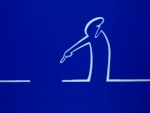Vesti iz sveta nauke

- Posts : 6735
Join date : 2012-02-11
- Post n°26
 Re: Vesti iz sveta nauke
Re: Vesti iz sveta nauke
Ko o cemu, bemty o nauci.
_____
"Ne morate krenuti odavde da biste dosli tamo. Moguce je krenuti odavde i vratiti se ponovo tu, ali preko onoga tamo."
Aca Seltik, Sabrana razmisljanja o topologiji, tom cetvrti.
My Moon Che Gavara.

- Posts : 3791
Join date : 2014-11-12
- Post n°28
 Re: Vesti iz sveta nauke
Re: Vesti iz sveta nauke

_____
Warning: may contain irony.

- Posts : 6159
Join date : 2014-11-04
- Post n°29
 Re: Vesti iz sveta nauke
Re: Vesti iz sveta nauke
Vest iz tehnologije. Baš onako jedan lep dodatak za vaš dom.
Tesla Powerwall

Tesla Powerwall


- Posts : 40078
Join date : 2012-02-12
Location : имам пуну полицу књига, која ми је главна?
- Post n°30
 Re: Vesti iz sveta nauke
Re: Vesti iz sveta nauke
Оћу!
Нарочито ми треба зими кад нестане струје на 15 минута. Мање више за рачунар, упс ће да га држи довољно док га не успавам, него ми је фрка за ватру - пумпа стоји, вода не кружи, да гасим или не. Ако би пумпа наставила да ради (свега 65 хватиРЖ), да накривим шешир.
Нарочито ми треба зими кад нестане струје на 15 минута. Мање више за рачунар, упс ће да га држи довољно док га не успавам, него ми је фрка за ватру - пумпа стоји, вода не кружи, да гасим или не. Ако би пумпа наставила да ради (свега 65 хватиРЖ), да накривим шешир.
_____
I drove a škodilak before it was cool.
Морони на власти чешће мењају правила него гаће.

- Posts : 40078
Join date : 2012-02-12
Location : имам пуну полицу књига, која ми је главна?
- Post n°31
 Re: Vesti iz sveta nauke
Re: Vesti iz sveta nauke
Стеларатор!
http://news.sciencemag.org/physics/2015/10/feature-bizarre-reactor-might-save-nuclear-fusion
Машина из рла која изгледа сексије од свега што дизајнери измисле за филм.
http://news.sciencemag.org/physics/2015/10/feature-bizarre-reactor-might-save-nuclear-fusion
Машина из рла која изгледа сексије од свега што дизајнери измисле за филм.
_____
I drove a škodilak before it was cool.
Морони на власти чешће мењају правила него гаће.

- Guest
- Post n°33
 Re: Vesti iz sveta nauke
Re: Vesti iz sveta nauke
Truly an incredible achievement considering he owns a commercial space launch agency. ITIF frankly need their heads examined.
plus jean

- Posts : 3436
Join date : 2014-10-29
- Post n°34
 Re: Vesti iz sveta nauke
Re: Vesti iz sveta nauke
40 god od objavljivanja Sebicnog Gena
Dawkins - genijalni evolucioni biolog i katastrofalni tviteras
Dawkins - genijalni evolucioni biolog i katastrofalni tviteras

_____
you cannot simply trust a language model when it tells you how it feels

- Posts : 81420
Join date : 2012-06-10
- Post n°36
 Re: Vesti iz sveta nauke
Re: Vesti iz sveta nauke
Za mene je ovo fascinantno otkriće. Nisam verovao da će za mog života otkriti gravitacione talase.
_____
"Oni kroz mene gledaju u vas! Oni kroz njega gledaju u vas! Oni kroz vas gledaju u mene... i u sve nas."
Dragoslav Bokan, Novi putevi oftalmologije

- Posts : 81420
Join date : 2012-06-10
- Post n°37
 Re: Vesti iz sveta nauke
Re: Vesti iz sveta nauke
Ancient extinction of giant Australian bird points to humans
January 29, 2016
The first direct evidence that humans played a substantial role in the extinction of the huge, wondrous beasts inhabiting Australia some 50,000 years ago -- in this case a 500-pound bird -- has been discovered by a University of Colorado Boulder-led team.
The flightless bird, known as Genyornis newtoni, was nearly 7 feet tall and appears to have lived in much of Australia prior to the establishment of humans on the continent 50,000 years ago, said CU-Boulder Professor Gifford Miller. The evidence consists of diagnostic burn patterns on Genyornis eggshell fragments that indicate humans were collecting and cooking its eggs, thereby reducing the birds’ reproductive success.
“We consider this the first and only secure evidence that humans were directly preying on now-extinct Australian megafauna,” said Miller, associate director of CU-Boulder’s Institute of Arctic and Alpine Research. “We have documented these characteristically burned Genyornis eggshells at more than 200 sites across the continent.”
A paper on the subject appears online Jan. 29 in Nature Communications.
In analyzing unburned Genyornis eggshells from more than 2,000 localities across Australia, primarily from sand dunes where the ancient birds nested, several dating methods helped researchers determine that none were younger than about 45,000 years old. Burned eggshell fragments from more than 200 of those sites, some only partially blackened, suggest pieces were exposed to a wide range of temperatures, said Miller, a professor in CU-Boulder’s Department of Geological Sciences.
Optically stimulated luminescence dating, a method used to determine when quartz grains enclosing the eggshells were last exposed to sunlight, limits the time range of burned Genyornis eggshell to between 54,000 and 44,000 years ago. Radiocarbon dating indicated the burnt eggshell was no younger than about 47,000 years old.
The blackened fragments were likely burned in transient, human fires -- presumably to cook the eggs -- rather than in wildfires, he said.
Amino acids -- the building blocks of proteins –decompose in a predictable fashion inside eggshells over time. In eggshell fragments burned at one end but not the other, there is a tell-tale “gradient” from total amino acid decomposition to minimal amino acid decomposition, he said. Such a gradient could only be produced by a localized heat source, likely an ember, and not from the sustained high heat produced regularly by wildfires on the continent both in the distant past and today.
Miller also said the researchers found many of the burnt Genyornis eggshell fragments in tight clusters less than 10 feet in diameter, with no other eggshell fragments nearby. Some individual fragments from the same clusters had heat gradient differences of nearly 1,000 degrees Fahrenheit, conditions virtually impossible to reproduce with natural wildfires there, he said.
“We can’t come up with a scenario that a wildfire could produce those tremendous gradients in heat,” Miller said. “We instead argue that the conditions are consistent with early humans harvesting Genyornis eggs, cooking them over fires, and then randomly discarding the eggshell fragments in and around their cooking fires.”
Another line of evidence for early human predation on Genyornis eggs is the presence of ancient, burned eggshells of emus -- flightless birds weighing only about 100 pounds and which still exist in Australia today -- in the sand dunes. Emu eggshells exhibiting burn patterns similar to Genyornis eggshells first appear on the landscape about 50,000 years ago, signaling they most likely were scorched after humans arrived in Australia, and are found fairly consistently to modern times, Miller said.
The Genyornis eggs are thought to have been roughly the size of a cantaloupe and weighed about 3.5 pounds, Miller said.
Genyornis roamed the Australian outback with an astonishing menagerie of other now-extinct megafauna that included a 1,000-pound kangaroo, a 2-ton wombat, a 25-foot-long-lizard, a 300-pound marsupial lion and a Volkswagen-sized tortoise. More than 85 percent of Australia’s mammals, birds and reptiles weighing over 100 pounds went extinct shortly after the arrival of the first humans.
The demise of the ancient megafauna in Australia (and on other continents, including North America) has been hotly debated for more than a century, swaying between human predation, climate change and a combination of both, said Miller. While some still hold fast to the climate change scenario -- specifically the continental drying in Australia from about 60,000 to 40,000 years ago -- neither the rate nor magnitude of that change was as severe as earlier climate shifts in Australia during the Pleistocene epoch, which lacked the punch required to knock off the megafauna, said Miller.
Miller and others suspect Australia’s first inhabitants traveled to the northern coast of the continent on rafts launched from Indonesian islands several hundred miles away. “We will never know the exact time window humans arrived on the continent,” he said. “But there is reliable evidence they were widely dispersed across the continent before 47,000 years ago.”
Evidence of Australia megafauna hunting is very difficult to find, in part because the megafauna there are so much older than New World megafauna and in part because fossil bones are easily destroyed by the chemistry of Australian soils, said Miller.
“In the Americas, early human predation on the giant animals in clear -- stone spear heads are found embedded in mammoth bones, for example,” said Miller. “The lack of clear evidence regarding human predation on the Australia megafauna had, until now, been used to suggest no human-megafauna interactions occurred, despite evidence that most of the giant animals still roamed Australia when humans colonized the continent.”
Co-authors on the new study include Research Professor Scott Lehman, doctoral student Christopher Florian and researcher Stephen DeVogel of CU-Boulder; Research Fellow John Magee of the Australian National University; and researchers from seven other Australian institutions. The study was funded in part by the U.S. National Science Foundation and the Australian Research Council.
- See more at: http://www.colorado.edu/news/releases/2016/01/29/ancient-extinction-giant-australian-bird-points-humans#sthash.yFuaoATO.dpuf
_____
"Oni kroz mene gledaju u vas! Oni kroz njega gledaju u vas! Oni kroz vas gledaju u mene... i u sve nas."
Dragoslav Bokan, Novi putevi oftalmologije

- Posts : 6735
Join date : 2012-02-11
- Post n°38
 Re: Vesti iz sveta nauke
Re: Vesti iz sveta nauke
A 15-year-old just discovered a lost Maya city in the Mexican jungle
William Gadoury, a 15-year-old school student from Quebec, Canada, has found something that’s been hidden from archaeologists for centuries - a lost city of the Maya civilisation, buried deep in the Yucatan jungle of southeastern Mexico.
He didn’t do it by hiring a bunch of expensive equipment, hopping on a plane, and slaving away on an excavation site - he discovered the incredible ruins from the comfort of his own home, by figuring out that the ancient cities were built in alignment with the stars above.
"I did not understand why the Maya built their cities away from rivers, on marginal lands and in the mountains," Gadoury told French-Canadian magazine, Journal de Montréal. "They had to have another reason, and as they worshiped the stars, the idea came to me to verify my hypothesis. I was really surprised and excited when I realised that the most brilliant stars of the constellations matched the largest Maya cities."
Gadoury had been studying 22 Maya constellations for years before releasing that he could line up the positions of 117 Maya cities on the ground with maps of stars and constellations above - something that no one had pieced together before.
With this in mind, he located a 23rd constellation, which included just three stars. According to his sky map, he could only link up two cities with the three stars, so suspected that a third city remained undetected in that spot.
Unfortunately, the location on the ground that matched up with the third star wasn’t exactly somewhere that Gadoury could just go visit - it’s right in the heart of the jungle, in the inaccessible and remote region of Mexico’s southern Yucatán Peninsula.
Not that that stopped Gadoury - he knew that a fire had stripped much of the forest in the area back in 2005, which meant that from above, you might have an easier time spotting ancient ruins than if the canopy had been thriving for the past couple of thousand years.
All he needed to do was access satellite imagery of the area from the Canadian Space Agency, which he mapped onto Google Earth images to see if there were any signs of his lost city.
Further analyses from satellites belonging to NASA and the Japanese Space Agency revealed what looks like a pyramid and 30 buildings at the location mapped by the star, Yucatan Expat Life reports. "Not only has he discovered a new Maya city, but it is one of the five largest on record."
As Daniel De Lisle from the Canadian Space Agency told Samuel Osborne at The Independent, the satellite images revealed certain linear features on the forest floor that looked anything but natural. "There are enough items to suggest it could be a man-made structure," he said.
http://www.sciencealert.com/a-15-year-old-just-discovered-a-lost-maya-city-in-central-america
Ako se ispostavi da je zaista nasao izgubljeni grad:

_____
"Ne morate krenuti odavde da biste dosli tamo. Moguce je krenuti odavde i vratiti se ponovo tu, ali preko onoga tamo."
Aca Seltik, Sabrana razmisljanja o topologiji, tom cetvrti.
My Moon Che Gavara.

- Posts : 81420
Join date : 2012-06-10
- Post n°39
 Re: Vesti iz sveta nauke
Re: Vesti iz sveta nauke

_____
"Oni kroz mene gledaju u vas! Oni kroz njega gledaju u vas! Oni kroz vas gledaju u mene... i u sve nas."
Dragoslav Bokan, Novi putevi oftalmologije

- Posts : 40078
Join date : 2012-02-12
Location : имам пуну полицу књига, која ми је главна?
- Post n°41
 Re: Vesti iz sveta nauke
Re: Vesti iz sveta nauke
Теретни тролејбус!
_____
I drove a škodilak before it was cool.
Морони на власти чешће мењају правила него гаће.

- Posts : 2513
Join date : 2015-07-20
- Post n°42
 Re: Vesti iz sveta nauke
Re: Vesti iz sveta nauke
Exclusive: How Elizabeth Holmes's House of Cards Came Tumbling Down
In a searing investigation into the once lauded biotech start-up Theranos, Nick Bilton discovers that its precocious founder defied medical experts—even her own chief scientist—about the veracity of its now discredited blood-testing technology. She built a corporation based on secrecy in the hope that she could still pull it off. Then, it all fell apart.
_____
Spomen-naplatna rampa "Zoran Babić"

- Posts : 2513
Join date : 2015-07-20
- Post n°43
 Re: Vesti iz sveta nauke
Re: Vesti iz sveta nauke
samo da izdvojim ovaj genijalan citat o Theranos-ovom upravnom odboru:
As Holmes started to assemble her board of directors, she chose a dozen older white men, almost none of whom had a background in anything related to health care. This included former secretary of state Henry Kissinger, former secretary of state George Shultz, former Georgia senator and chairman of the Armed Services Committee Sam Nunn, and William J. Perry, the former defense secretary. (Bill Frist, the former Senate majority leader, and former cardiovascular doctor, was an exception.) “This was a board that was better suited to decide if America should invade Iraq than vet a blood-testing company,” one person said to me.

- Posts : 3791
Join date : 2014-11-12
- Post n°44
 Re: Vesti iz sveta nauke
Re: Vesti iz sveta nauke
psihologija se opet zaljuljala.
background (na srpskom dupe): socijalna psihologija se par decenija drzala odredjene metodoloske formule koja je razvijena za kognitivnu psihologiju, ciji eksperimenti su znacajno drugaciji. npr. kognitivna psihologija poredi istih 20 ljudi u dve eksperimentalno kontrolisane situacije, obicno istrazujuci (dosadne) efekte koji se pojavljuju kod skoro svih pojedinaca. socijalna psihologija to prenosi tako sto dve grupe od 20 razlicitih ljudi koje stavi u dve razlicite situacije, daleko slabije eksperimentalno kontrolisane, gde su efekti daleko varijabliniji (ali interesantniji). socijalna psihlogija prihvata statisticku znacajnost na nivou poredjenja dve grupe za zlatni standard za tvrdnju da neki efekat postoji (iako, realno, sama statisticka znacajnost govori vrlo malo o tome kako se neke dve grupe razlikuju), dok ih kognitivna psihologija uzima za polaznu tacku diskusije.
u isto vreme, po pritiskom stare potrebe da se odvoji od filozofije - a i od 'to bi i moja baba mogla da ti kaze' momenta, psihologija stavlja ogroman akcenat na empiriju, posebno na fenomene koji se mogu utvrditi iskljucivo empirijskim putem. socijalna psihologija se tako nasla u periodu kad je gurala iskljucivo kontraintuitivne, iznenadjujuce nalaze. tipican nalaz ima suptilnu eksperimentalnu manipulaciju koja je samo istrazivacu-znalcu ocigledna, se ogromnim efektom na ponasanje ili stavove.
mali problem sa malim grupama, varijablnim efektima i statistickom znacajnoscu kao konacnim kriterijumom istine, postaje veliki problem kad se uzme u obzir politika objavljivanja clanaka, gde u casopise ulazi samo ono sto je potvrdjeno statistikom. efekti koje niko nije nasao ne bivaju objavljeni. efekti koji bivaju objavljeni su u velikom broju slucajeva plod slucajnosti. nije tesko ispitati mnogo malih grupa i objaviti samo one nalaze koji potvrdjuju neciju hipotezu. nije tesko ubediti sebe da u preostalih n puta nisi nesto nastelovao dobro kad si radio istrazivanje. niko ne zna, na osnovu literature, da su ti nalazi samo mali procenat ukupnih nalaza. sto bi rekao ben goldacre, ako imam novcic i imam pravo da ti u 50% slucajeva ne kazem na koju stranu je pao (a ni da sam ga bacio), mogu da te ubedim da imam novcic s dve glave.
bez losih namera, kao cista posledica politike i istrazivackih navika, socijalna psihologiju je postala podrucje bombasticnih, nepouzdanih rezultata. u jednom momentu, ne toliko davno (tipa pre 3-4-5 godina), nekoliko takvih nalaza dolazi pod radar statisticara. uglavnom zato sto su objavljeni efekti bili toliko veliki da su bili nerealni. npr. 20% zena koje ovuliraju menjaju politicku partiju za koju glasaju (ako su udate u tih nekoliko dana biraju demokrate, ako su neudate republikance...).
pocinje veliko, ozbiljno cesljanje literature, razvoj metoda za utvrdjivanje da li su prethodno objavljene brojke realno moguce, pojavljuju se sajtovi gde ljudi opisuju svoje neuspesne eksperimente. the file drawer opens. pocinje preispitivanje u vezi sa eksperimentalnim metodama, statistickim zahvatima, i spregom izmedju statisticke i teorijske relevantnosti. ljudi pokusavaju da repliciraju vazne istorijske nalaze i u velikom broju slucajeva ne uspevaju. pojavljuje se pub peer, mesto za javnu diskusiju objavljenih clanaka. blogovi nicu kao pecurke. grupe na fejsbuku. twitter diskusije novih clanaka. raste broj recenzenata koji ne prihvataju clanke ukoliko istrazivaci ne podignu podatke na neki javni server. nastaje prvo bioArxiv a onda i psyArxiv, mesto na koje se clanci podizu pre obavljivanja, da bi se pruzila prilika svima da daju komentare pre nego sto se udje u zvanicni proces recenzije. pocinje insistiranje na prikazuvanju svih dobijenih podataka, a ne samo proseka.
i onda bivsa predsednica americke psiholoske asocijacije objavi ovo, i posere nam se svima na glavu.
edit: silne peripetije s linkom, ignorisite par postove dole
background (na srpskom dupe): socijalna psihologija se par decenija drzala odredjene metodoloske formule koja je razvijena za kognitivnu psihologiju, ciji eksperimenti su znacajno drugaciji. npr. kognitivna psihologija poredi istih 20 ljudi u dve eksperimentalno kontrolisane situacije, obicno istrazujuci (dosadne) efekte koji se pojavljuju kod skoro svih pojedinaca. socijalna psihologija to prenosi tako sto dve grupe od 20 razlicitih ljudi koje stavi u dve razlicite situacije, daleko slabije eksperimentalno kontrolisane, gde su efekti daleko varijabliniji (ali interesantniji). socijalna psihlogija prihvata statisticku znacajnost na nivou poredjenja dve grupe za zlatni standard za tvrdnju da neki efekat postoji (iako, realno, sama statisticka znacajnost govori vrlo malo o tome kako se neke dve grupe razlikuju), dok ih kognitivna psihologija uzima za polaznu tacku diskusije.
u isto vreme, po pritiskom stare potrebe da se odvoji od filozofije - a i od 'to bi i moja baba mogla da ti kaze' momenta, psihologija stavlja ogroman akcenat na empiriju, posebno na fenomene koji se mogu utvrditi iskljucivo empirijskim putem. socijalna psihologija se tako nasla u periodu kad je gurala iskljucivo kontraintuitivne, iznenadjujuce nalaze. tipican nalaz ima suptilnu eksperimentalnu manipulaciju koja je samo istrazivacu-znalcu ocigledna, se ogromnim efektom na ponasanje ili stavove.
mali problem sa malim grupama, varijablnim efektima i statistickom znacajnoscu kao konacnim kriterijumom istine, postaje veliki problem kad se uzme u obzir politika objavljivanja clanaka, gde u casopise ulazi samo ono sto je potvrdjeno statistikom. efekti koje niko nije nasao ne bivaju objavljeni. efekti koji bivaju objavljeni su u velikom broju slucajeva plod slucajnosti. nije tesko ispitati mnogo malih grupa i objaviti samo one nalaze koji potvrdjuju neciju hipotezu. nije tesko ubediti sebe da u preostalih n puta nisi nesto nastelovao dobro kad si radio istrazivanje. niko ne zna, na osnovu literature, da su ti nalazi samo mali procenat ukupnih nalaza. sto bi rekao ben goldacre, ako imam novcic i imam pravo da ti u 50% slucajeva ne kazem na koju stranu je pao (a ni da sam ga bacio), mogu da te ubedim da imam novcic s dve glave.
bez losih namera, kao cista posledica politike i istrazivackih navika, socijalna psihologiju je postala podrucje bombasticnih, nepouzdanih rezultata. u jednom momentu, ne toliko davno (tipa pre 3-4-5 godina), nekoliko takvih nalaza dolazi pod radar statisticara. uglavnom zato sto su objavljeni efekti bili toliko veliki da su bili nerealni. npr. 20% zena koje ovuliraju menjaju politicku partiju za koju glasaju (ako su udate u tih nekoliko dana biraju demokrate, ako su neudate republikance...).
pocinje veliko, ozbiljno cesljanje literature, razvoj metoda za utvrdjivanje da li su prethodno objavljene brojke realno moguce, pojavljuju se sajtovi gde ljudi opisuju svoje neuspesne eksperimente. the file drawer opens. pocinje preispitivanje u vezi sa eksperimentalnim metodama, statistickim zahvatima, i spregom izmedju statisticke i teorijske relevantnosti. ljudi pokusavaju da repliciraju vazne istorijske nalaze i u velikom broju slucajeva ne uspevaju. pojavljuje se pub peer, mesto za javnu diskusiju objavljenih clanaka. blogovi nicu kao pecurke. grupe na fejsbuku. twitter diskusije novih clanaka. raste broj recenzenata koji ne prihvataju clanke ukoliko istrazivaci ne podignu podatke na neki javni server. nastaje prvo bioArxiv a onda i psyArxiv, mesto na koje se clanci podizu pre obavljivanja, da bi se pruzila prilika svima da daju komentare pre nego sto se udje u zvanicni proces recenzije. pocinje insistiranje na prikazuvanju svih dobijenih podataka, a ne samo proseka.
i onda bivsa predsednica americke psiholoske asocijacije objavi ovo, i posere nam se svima na glavu.
edit: silne peripetije s linkom, ignorisite par postove dole

Last edited by bemty on Thu Sep 22, 2016 11:35 am; edited 3 times in total
_____
Warning: may contain irony.

- Posts : 40078
Join date : 2012-02-12
Location : имам пуну полицу књига, која ми је главна?
- Post n°45
 Re: Vesti iz sveta nauke
Re: Vesti iz sveta nauke
Можда што садржи размаке... требало је нешто успут да их замени са %20 па би било у реду.
_____
I drove a škodilak before it was cool.
Морони на власти чешће мењају правила него гаће.

- Posts : 3791
Join date : 2014-11-12
- Post n°46
 Re: Vesti iz sveta nauke
Re: Vesti iz sveta nauke
tacno... u oridjinalu je %, ali ja u svom prozoru samo vidim link, tj. ne mogu da zamenim. hmm.
_____
Warning: may contain irony.

- Guest
- Post n°47
 Re: Vesti iz sveta nauke
Re: Vesti iz sveta nauke
e taman imam pitanje. da li ti sama radis statistiku ili to prepustis matematicarima? od nekih mladih psihologa ovde sam cuo da naucni rad "nije pravi" ako statistiku ne radis sam/a, na sta se neki malo stariji smeju grohotom.

- Posts : 3791
Join date : 2014-11-12
- Post n°48
 Re: Vesti iz sveta nauke
Re: Vesti iz sveta nauke
sama, svakako. ne mogu da zamislim da tumacim rezultate a da nemam uvid u to kako se podaci ponasaju kad ih teram da skacu kroz kojekakve obruce. tipa, ove cetiri grupe podataka ce dati iste vrednosti ako pitam statistiku da mi kaze da li je x vece od y:

...sto ne mogu da znam na osnovu nacina na koji se standardno obradjuju podaci.
tako da, slazem se sa mladjom generacijom, dok se ne zasuku nogavice i ne ugazi u podatke, nista od solidne empirije.

...sto ne mogu da znam na osnovu nacina na koji se standardno obradjuju podaci.
tako da, slazem se sa mladjom generacijom, dok se ne zasuku nogavice i ne ugazi u podatke, nista od solidne empirije.
_____
Warning: may contain irony.

- Posts : 3791
Join date : 2014-11-12
- Post n°49
 Re: Vesti iz sveta nauke
Re: Vesti iz sveta nauke
btw nisam ti ja bas psiholog... bar ne onako kako se psiholog zamislja. za ono sto ja radim je potrebno programiranje i digitalna obrada podataka... pisanje koda za statisticku obradu je jos najlaksi deo u odnosu na obrazovanje koje imam.
_____
Warning: may contain irony.

- Korisnik

- Posts : 4670
Join date : 2015-02-17
- Post n°50
 Re: Vesti iz sveta nauke
Re: Vesti iz sveta nauke
Caesarean births 'affecting human evolution'
The regular use of Caesarean sections is having an impact on human evolution, say scientists.
More mothers now need surgery to deliver a baby due to their narrow pelvis size, according to a study.
Researchers estimate cases where the baby cannot fit down the birth canal have increased from 30 in 1,000 in the 1960s to 36 in 1,000 births today.
Historically, these genes would not have been passed from mother to child as both would have died in labour.
Researchers in Austria say the trend is likely to continue, but not to the extent that non-surgical births will become obsolete.
Dr Philipp Mitteroecker, of the department of theoretical biology at the University of Vienna, said there was a long standing question in the understanding of human evolution.
"Why is the rate of birth problems, in particular what we call fetopelvic disproportion - basically that the baby doesn't fit through the maternal birth canal - why is this rate so high?" he said.
"Without modern medical intervention such problems often were lethal and this is, from an evolutionary perspective, selection.
"Women with a very narrow pelvis would not have survived birth 100 years ago. They do now and pass on their genes encoding for a narrow pelvis to their daughters."Opposing forces
It has been a long standing evolutionary question why the human pelvis has not grown wider over the years.
The head of a human baby is large compared with other primates, meaning animals such as chimps can give birth relatively easily.
The researchers devised a mathematical model using data from the World Health Organization and other large birth studies.
They found opposing evolutionary forces in their theoretical study.
One is a trend towards larger newborns, which are more healthy.
However, if they grow too large, they get stuck during labour, which historically would have proved disastrous for mother and baby, and their genes would not be passed on.
"One side of this selective force - namely the trend towards smaller babies - has vanished due to Caesarean sections," said Dr Mitteroecker.
"Our intent is not to criticise medical intervention," he said. "But it's had an evolutionary effect. "Future trends
The researchers estimated that the global rate of cases where the baby could not fit through the maternal birth canal was 3%, or 30 in 1,000 births.
Over the past 50 or 60 years, this rate has increased to about 3.3-3.6%, so up to 36 in 1,000 births.
That is about a 10-20% increase of the original rate, due to the evolutionary effect.
"The pressing question is what's going to happen in the future?" Dr Mitteroecker said.
"I expect that this evolutionary trend will continue but perhaps only slightly and slowly.
"There are limits to that. So I don't expect that one day the majority of children will have to be born by [Caesarean] sections."
The research is published in the journal, Proceedings of the National Academy of Sciences.
Commenting on the study, Smithsonian paleoanthropologist Dr Briana Pobiner said there are "probably many other biological and cultural issues that factor into the Caesarean sections rate, which varies widely across the developed and developing world".
And Daghni Rajasingam, a consultant obstetrician and a spokesman for the Royal College of Obstetricians, said factors such as diabetes and obesity, are having an impact on the number of Caesarean sections.
"I think what is important to take into the [question of] evolution is that things like diabetes are much more common at a younger age so we see many more women of reproductive age who have diabetes," she said.
"That has consequences as to whether or not they may need a caesarean section.
"In addition, the rates of obesity are increasing so more and more women of reproductive age have a higher body mass index and this again has an impact on caesarean section rates."
|
|
|



 by Ointagru Unartan Thu Sep 03, 2015 3:09 pm
by Ointagru Unartan Thu Sep 03, 2015 3:09 pm


 Erős Pista
Erős Pista